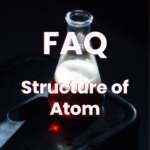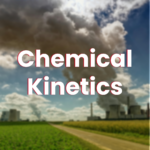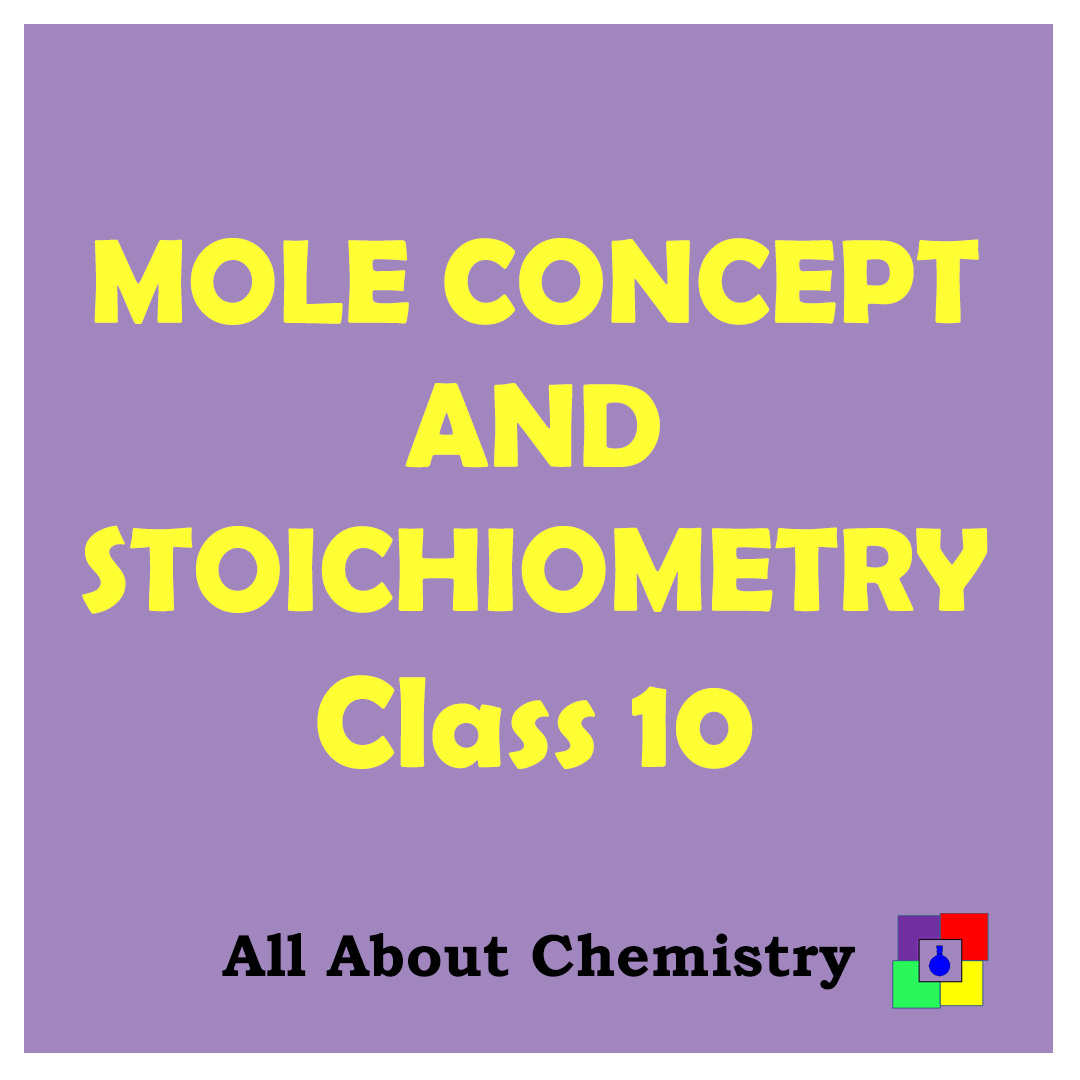1.Gay Lussa’s Law of gaseous volume:
Under similar condition of temperature and pressure, if the reactants and products both are gaseous, then their volumes bear a simple whole number ratio with one another.
2. Avogadro’s Law:
Under similar conditions of temperature and pressure, equal volumes of all gases contain equal number of molecules.
3. Mole:
It is the quantity of a substance that contains same number of particles as the number of atoms in 12 g of C-12.
4. Molar mass:
The mass of one mole of any substance.
5. Molar volume:
At STP, the volume occupied by one mole of any gas is called molar volume. Its value is 22.4L
6. Empirical formula:
The simplest formula possible for any compound in which atoms of the constituent elements are in a simple whole number ratio.
7. Molecular formula:
The formula that shows the exact number of atoms of each of the constituent elements present in a molecule of any compound.
8. Relative molecular mass = 2 x Vapour density
9. Mass of ‘n’ mole of a compound = n x molecular wt of the compound.
10. Number of molecules = Number of moles x 6.023x 1023
11. Volume of n moles = no of moles x 22.4L
Practice Set-1
Gay Lussac’s Law of gaseous volume:
1. 3L of acetylene is reacted with 5L of oxygen. What will be the final composition of the resultant mixture?
2. 30mL of methane is mixed with 80mL of oxygen and burnt. If all measurements are made at room temperature and constant pressure, what is the volume of the unreacted oxygen?
3. What volume of air (containing 20% oxygen) is required for complete combustion of 100 mL of ethane? Also calculate the volume of carbon dioxide formed during the combustion process.
4. 200mL of ethylene is burnt in just sufficient air (20% oxygen) to form carbon dioxide and steam. Find the composition of resulting mixture.
5. At STP, a gas mixture of 100 cc containing hydrogen and CO is burnt in presence of excess air. If the volume of carbin dioxide formed is 50cc at STP, then calculate the composition of CO and hydrogen in the original mixture.
6. A mixture of hydrogen and chlorine occupying 36mL of volume was exploded. On shaking it with water, 4 mL of hydrogen was left behind. Find the composition of the mixture.
7. At STP, a gas mixture X contains 5% acetylene, 20% CO, 30% methane and 45% hydrogen by volume. 20mL of X is exploded in presence of 320mL of oxygen. If the final temperature and pressure of the mixture are maintained at STP, then calculate the volume and composition of the resulting mixture.
8. Nitrous oxide reacts with methane to produce carbon dioxide, steam and nitrogen gas. Calculate the volume of nitrous oxide required to produce 150mL of steam.
9. Ammonia reacts with oxygen to form NO and steam. How many litres of NO are formed when 90l of oxygen react with ammonia at STP?
10. 200mL of carbon dioxide is collected at STP when a mixture of acetylene and oxygen is ignited. Calculate the volume of acetylene and oxygen at STP in the original mixture.
Practice Set-2
Avogadro’s Law:
1. 20mL of nitrogen contain x molecules. Calculate the molecules in
i. 10mL chlorine
ii. 20 mL ammonia
iii. 5mL sulphur dioxide
2. The volume of gases A, B, C and D are in the ratio of 1:2:2:4 under the same condition of temperature and pressure.
i. Which sample of gas contains the maximum number of molecules?
ii. What will happen to the volume of A, when the number of its molecules is doubled?
iii. If the ratio of gas volumes refers to the reactants and products of a reaction, which gas law is being observed?
iv. If the volume of A is actually 5.6L at STP, calculate the number of molecules in the actual volume of D at STP. [Avogadro’s number = 6.023×1023]
v. State the mass of D, if the gas is N2O.
3. Samples of the gases, oxygen, nitrogen, carbon dioxide and CO contain the same number of molecules (say ,X). The molecules of oxygen occupy V litres and have a mass of 8g.
i. What is the volume occupied by
a. X molecules of nitrogen
b. 2X molecules of CO
ii. What is the mass of carbon dioxide in grams?
4. 2L of carbon dioxide, 3L of chlorine, 5l of hydrogen, 4L of nitrogen and 1L of sulphur dioxide are taken. Which of these samples will have –
i. Maximum number of molecules.
ii. Minimum number of molecules.
5. 500mL of hydrogen contains n molecules. How many molecules of oxygen will be present in 250mL of oxygen ?
Practice Set-3
Empirical and molecular formula:
1. 40% carbon, 6.7% hydrogen, 53.3% oxygen. V.D=90. Calculate M.F
2. 23.76% carbon, 5.94% hydrogen 70.30% chlorine. Molecular mass 50.5. Calculate M.F.
3. 80% carbon, 20% hydrogen, V.D=15. Calculate M.F
4. 12.67% carbon, 2.13% hydrogen, 85.11% of Br, V.D=94. Calculate M.F
5. 12.5% hydrogen rest nitrogen. Molar mass 32. Calculate M.F.
6. 14.4% carbon, 1.2% hydrogen,84.5% chlorine. Molar mass=168. Calculate M.F
7. 4.8% carbon, 95.2% bromine. V.D=252. Calculate M.F
8. 47.9% K, Be=5.5%, 46.6% F. Calculate E.F.
9. 6.21% lead, 4.26% chlorine. Calculate the E.F.
10. Anhydrous dibasic acid has 2.25 hydrogen, 26.7% carbon, 71.15 oxygen. Calculate M.F
11. 16.8% Na, 4.2% carbon, 72.73% oxygen, 6.99% hydrogen. All hydrogen forms water pf crystallisation. Calculate M.F.
12. 57.82% carbon, 3.6% hydrogen, 38.58% oxygen.V.D=83. Calculate M.F.
13. 11.2% mitrogen, 3.2% hydrogen, 41.2% Cr and 44.4% oxygen. Calculate E.F.
14. 29.11% Na, 40.51% S, 30.38% oxygen. Calculate E.F.
15. 2.47% hydrogen, 38.27% phosphorous, 59.26% oxygen, molecular mass 162. Calculate M.F.
16. 37.6% na, 23.1% Si and 39.3% oxygen. Calculate E.F.
17. Cu=84.11%, C=15.89%. Molecular mass= 151. Calculate M.F.
18. 24.68% K, 34.81% Mn, 40.51% O, Mol wt=158. Calculate M.F.
19. 34.48% ca, 24.14% si, 41.38% oxygen, mol wt=116. Calculate M.F.
20. 405 carbon, 6.675 hydrogen and the rest oxygen Mol. Wt =60. Calculate M.F.
Practice Set-4
Mole concept
1. What is the volume occupied by the following gases at STP?
i. 64g of oxygen
ii. 32g of Sulphur dioxide
iii. 44g of carbon dioxide
iv. 14g of nitrogen
v. 8g of hydrogen
vi. 0.01mole of hexane gas
vii. 5 moles of butane gas
viii. 0.2 mole of benzene gas
2. What is the number of moles in-
i. 1000g of calcium carbonate
ii. 12.8g of methane
iii. 11g of carbon dioxide
iv. 3.55g of chlorine
v. 270g of water.
vi. 22.4L of ammonia gas
vii. 44.8L of carbon dioxide gas
viii. 2.24L of nitrous oxide gas
ix. 0.224L of sulphur dioxide gas
3. What is the number of molecules in-
i. 10g of calcium carbonate
ii. 3.6g of water
iii. 19.6g of phosphoric acid
iv. 200g of NaOH
v. 1.5g of ethane gas
vi. 2.2g of carbon dioxide
vii. 16g of sulphur dioxide
viii. 2g of oxygen
ix. 58.5g of NaCl
4. What is the mass in grams of the compounds in-
i. 4.2161 x 1023 molecules of carbonic acid
ii. 6.023 x 1023 molecules of hydrogen peroxide
iii. 1.2046 x 1021 molecules of calcium carbonate
iv. 3.0115 x 1023 molecules of nitrogen dioxide
v. 4.8184 x 1023 molecules of acetic acid
vi. 2 moles of water
vii. 0.25 mole of calcium carbonate
viii. 0.5 mole of nitric acid
ix. 3 moles of sodium hydroxide
x. 10 moles of glucose
xi. 2.24mL of propane at STP
xii. 448mL of nitric acid at STP
xiii. 5.6L of propane at STP
xiv. 560mL of methane at STP
Practice Set-5
Equation based questions:
1. Sodium sulphite reacts with HCl to form NaCl, water and sulphur dioxide. If 7.3 of HCl is used calculate-
i. Mass of sodium sulphite reacted.
ii. Volume of SO2 formed at STP
iii. Molecules of water formed.
iv. Mole of NaCl formed.
2. Ammonium sulphate heated with Ca(OH)2 to form calcium sulphate, water, ammonia. If 0.34g of ammonia is produced calculate-
i. Mass of ammonium sulphate reacted.
ii. Moles of calcium hydroxide reacted.
iii. Volume of ammonia formed at STP
iv. Molecules of calcium sulphate formed.
3. Carbon reacts with nitric acid to form carbon dioxide, nitrogen dioxide and water. If 0.224L of carbon dioxide if formed. Calculate-
i. Mass of nitric acid reacted.
ii. Volume of nitrogen dioxide formed at STP
iii. Molecules of water formed
iv. Moles of carbon reacted.
4. Lead nitrate is heated to form lead oxide, nitrogen dioxide and oxygen. If 0.56L of oxygen is formed calculate-
i. Mass of lead nitrate reacted.
ii. Volume of nitrogen dioxide formed.
iii. Molecules of PbO formed
iv. Moles of nitrogen dioxide formed






